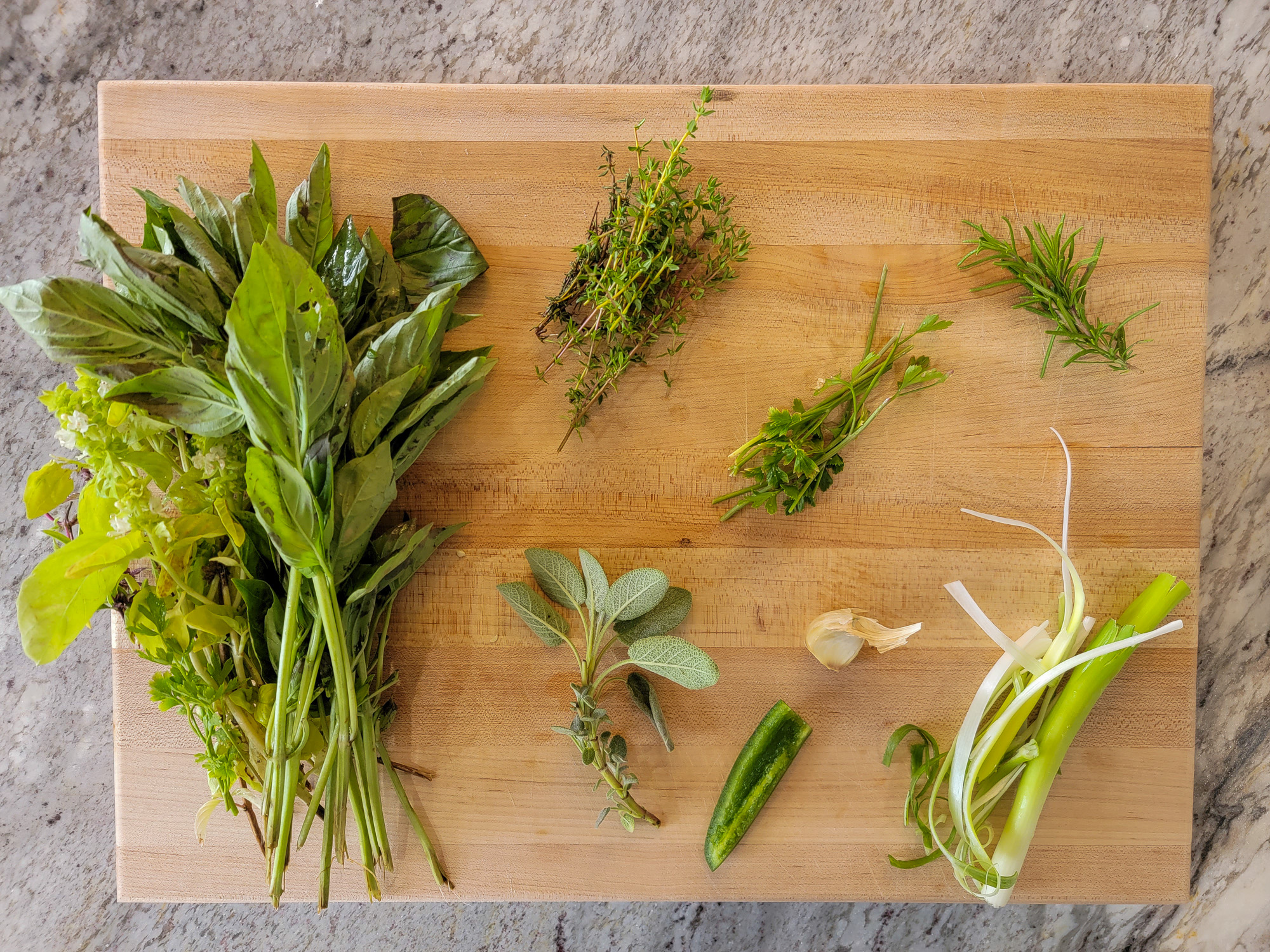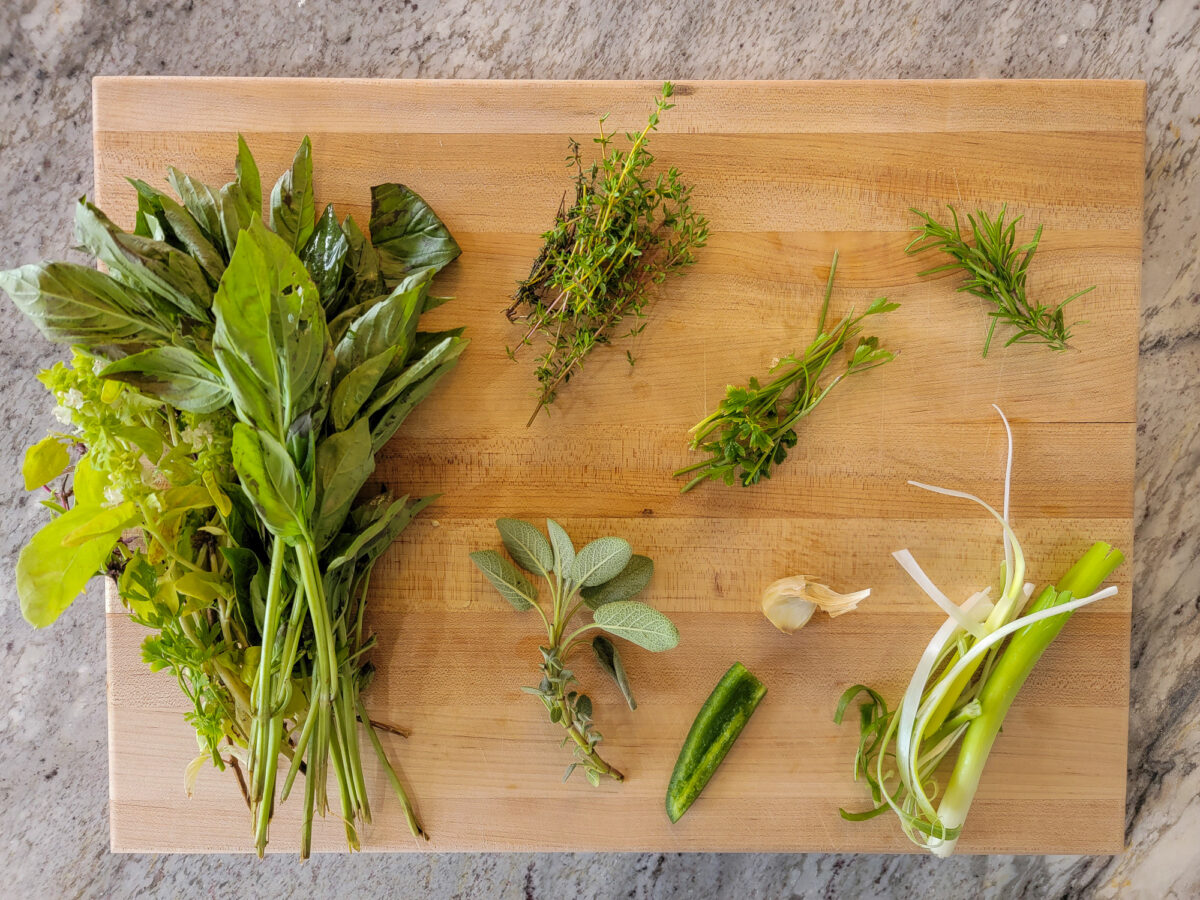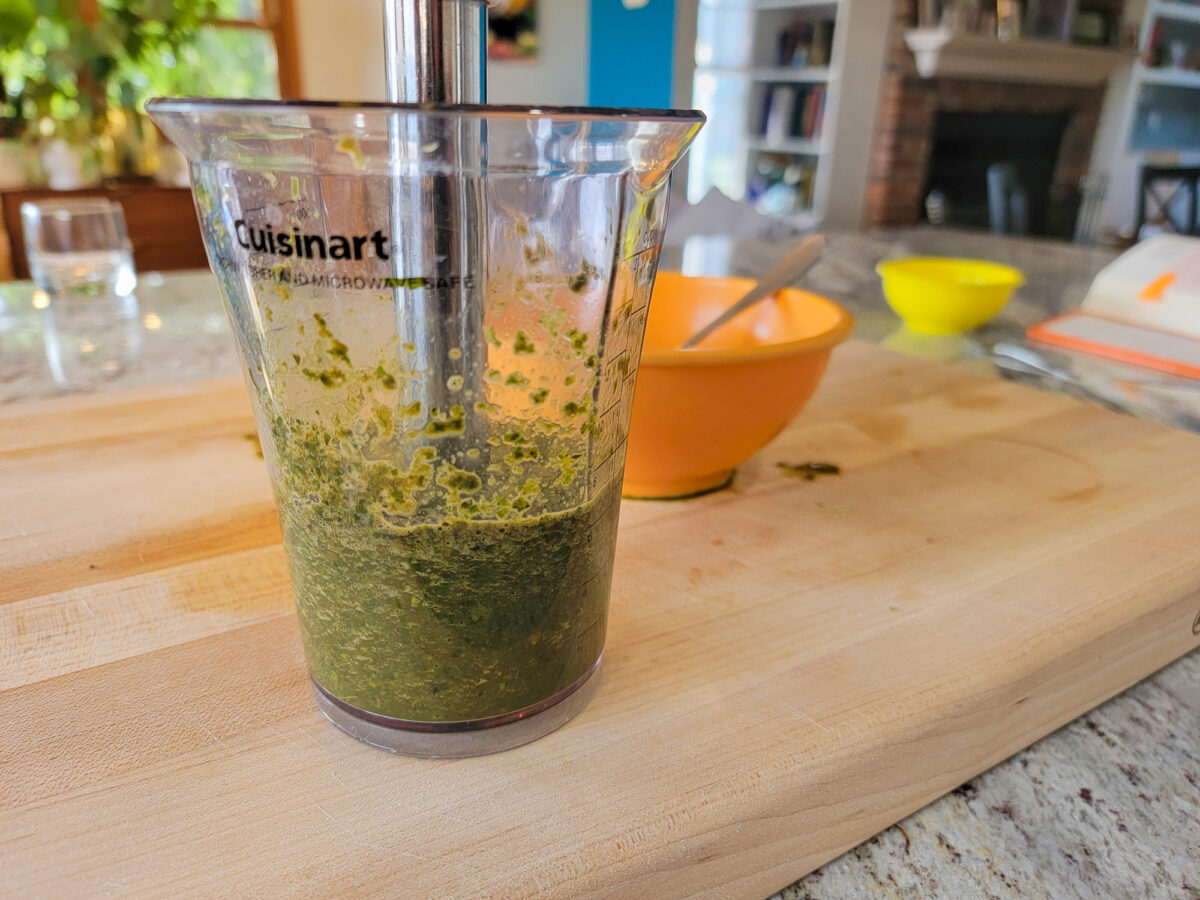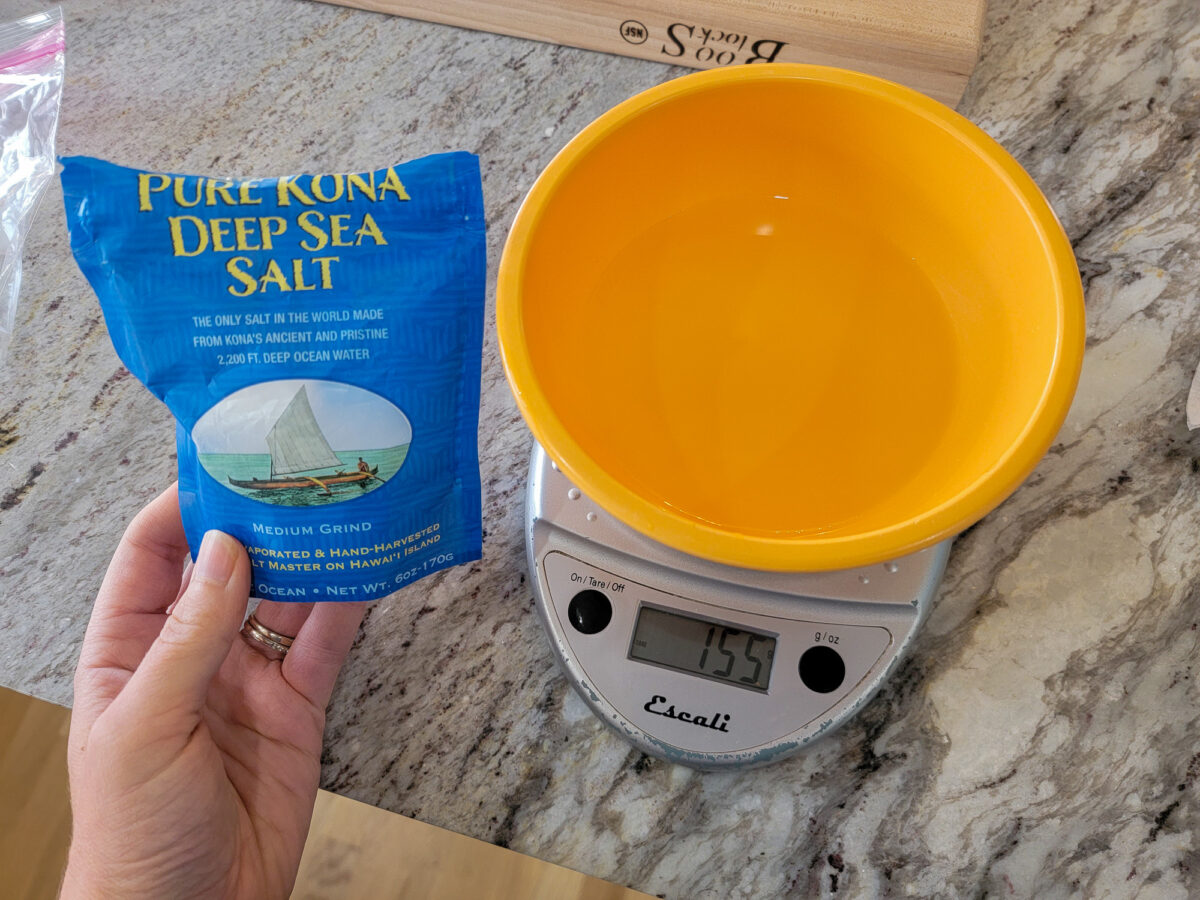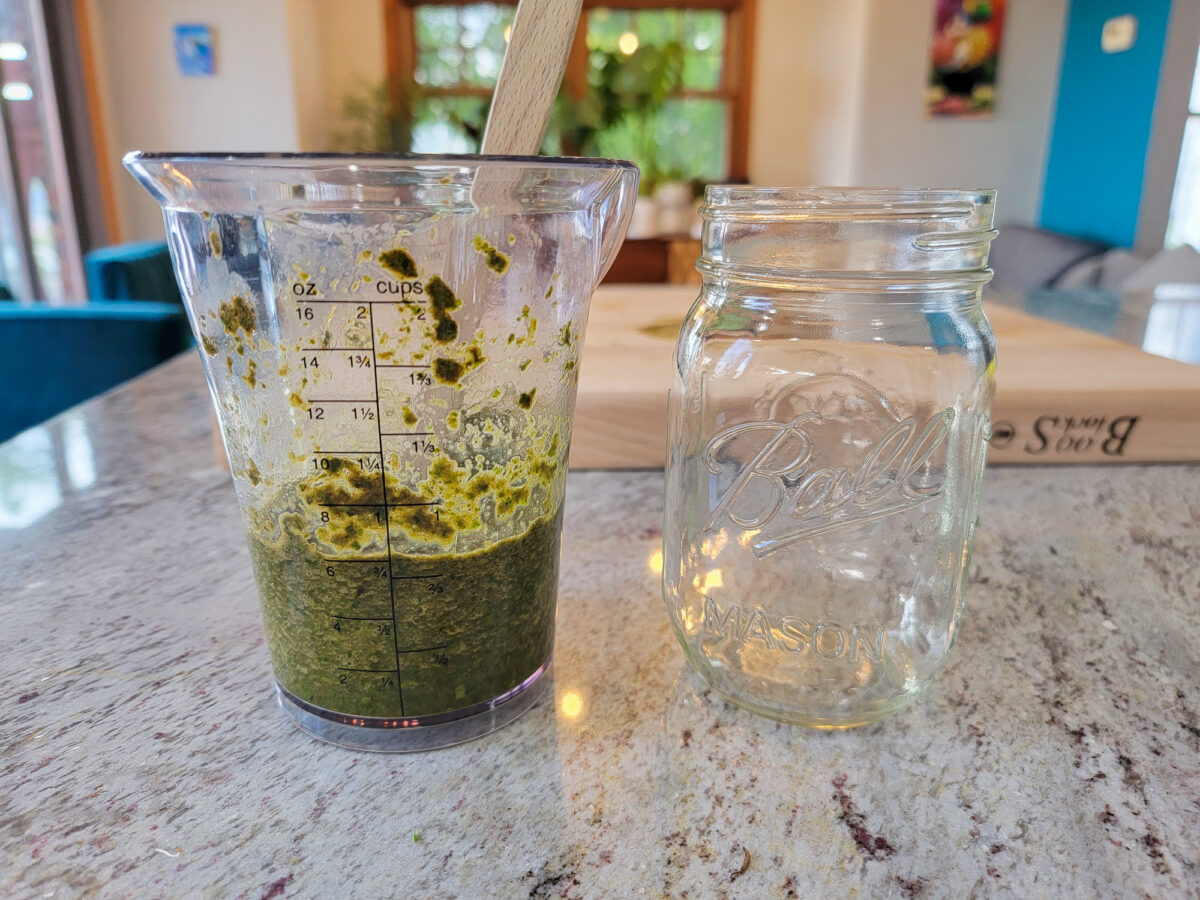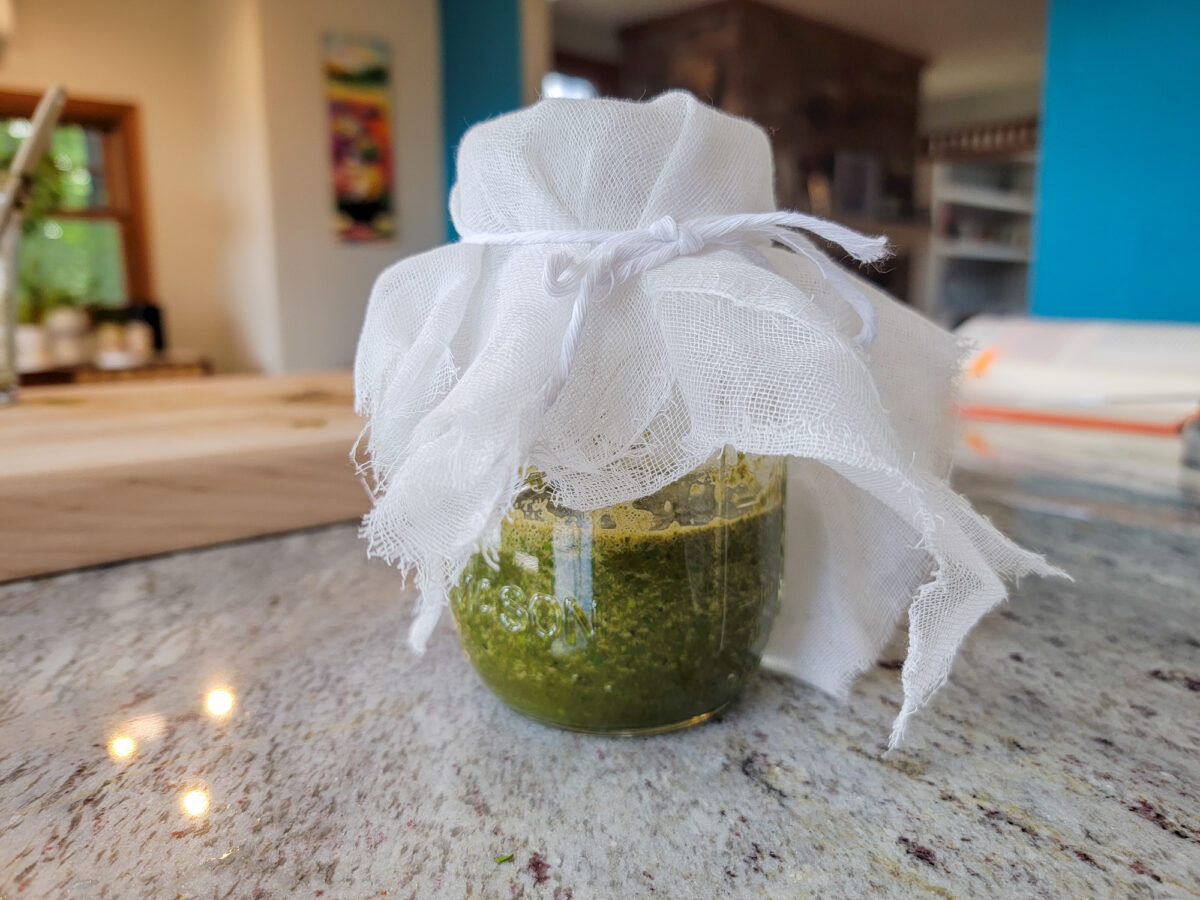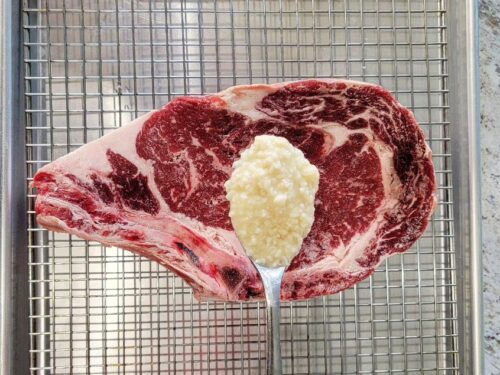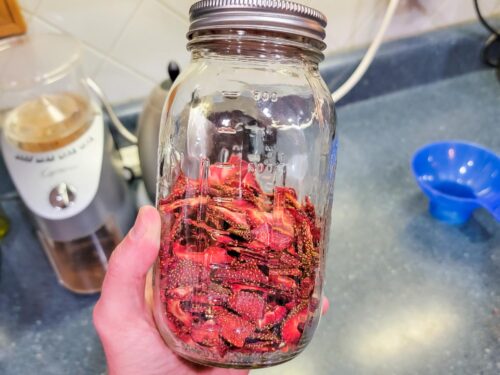Disclaimers: Our site uses demographic data, email opt-ins, display advertising, and affiliate links. Please check out our Terms and Conditions for more information.
We are kind of obsessed with growing fresh herbs in our garden – everything from the usual suspects of basil, parsley, and thyme, to more obscure things like lovage and epazote. Every spring we ambitiously plant dozens of different herbs, which seems great in theory- until you have the wonderful problem of having too many herbs.
So, what do you do? Make a meal with as many herbs as possible? Perhaps. Let them rot? That also happens.
Instead, why not make a lacto-fermented herb sauce so that way you can enjoy the powerful flavor of herbs weeks or months later!
Why Make a Lacto-Fermented Herb Sauce?
In the past we typically preserved our herb bounty by dehydrating. However most herbs taste quite different when they're dehydrated, losing that fresh and bright herbalness. Don't get us wrong, we still like to dehydrate herbs. But a few years ago we discovered a technique for preserving herbs using lacto-fermentation that is described in The Art of Fermentation by Sandor Katz.
Basically, the technique involves blending a melange of fresh herbs with a brine, letting it ferment at room temperature for a few days, and then refrigerating.
There are several things we love about this lacto-fermented herb sauce. First, it's a sauce which means it's super easy to use in cooking. No need to worry about chopping up a mound of herbs because they're already blended in the sauce. Secondly, it tastes great. Sure, it isn't nearly as fresh tasting as the herbs are when they're harvested, but it is light years fresher tasting than dried herbs. Thirdly, this stuff will last nearly forever in your fridge. We've had a jar for over a year and a half and it doesn't go bad (thanks, lactic acid bacteria!).
Fermented Herb Sauce Recipe
Herbs: We typically use a mixture of tender herbs like basil, Thai basil, parsley, and thyme; sometimes we also add rosemary and/or sage. In terms of proportions, the majority of our sauces are usually basil and parsley. Use whatever herbs you have, in whatever proportion you like! Or better yet, make several different jars and use different combinations in each.
Aromatics: For extra flavor try adding aromatics like onions, scallions, garlic, and/or hot peppers.
Brine: We usually use a 3.5% brine, meaning we add 3.5 g of salt for every 100 g of water on a kitchen scale. We usually use a non-iodized salt like sea salt. Add your salt to the water and stir until it is dissolved.
The Technique to Ferment Herbs
We like to use an immersion blender and build the sauce right in the immersion blender cup if we're making smaller batches of the sauce.
Pluck your herbs from any woody stems, but if the stems are tender (like parsley, for example) you can include them in the sauce. Pack the herbs into the immersion blender cup.
Roughly chop any aromatics and add them to the cup.
Pour a small amount of brine into the cup, and pack the mixture down with the immersion blender head. Keep adding brine a little bit at a time and packing the mixture down until the blender head is submerged in the liquid. Blend until everything is completely smooth (you may need to add a little extra brine to get everything to coalesce).
Transfer the herb sauce to a clean glass jar. Cover with a cheesecloth, using a rubber band or string to secure the cloth on the jar. Ferment at room temperature for 3-5 days. Then remove the cheesecloth, put a lid on the jar, and move it to the fridge where it will keep for at least a year.
- Note: the top layer of the herb paste will oxidize and turn a darker green/brown when it is fermenting at room temperature and also in the fridge. This is completely normal and fine- just stir the mixture each time before you use it to blend it all together.
- Any other growth may be a sign that your jar was not clean or did not have enough salt. These may not be safe to consume and the paste should likely be discarded.
How to Use the Fermented Herb Sauce
This sauce is our go-to in the winter when we want to make a creamy, herby salad dressing. Just add a spoonful or two to a few tablespoons of yogurt and/or mayo and thin it out with some buttermilk.
The fermented herb sauce is also great as a garnish to meats or veggies – just combine a few tablespoons of the sauce to a few tablespoons of olive oil and mix.
It's also great as a topping for eggs, omelets, soups, fancy toasts- the sky's the limit!
What do you use your lacto-fermented herb sauce for? Comment below to share!
Pick Up Fermentation Gear Today
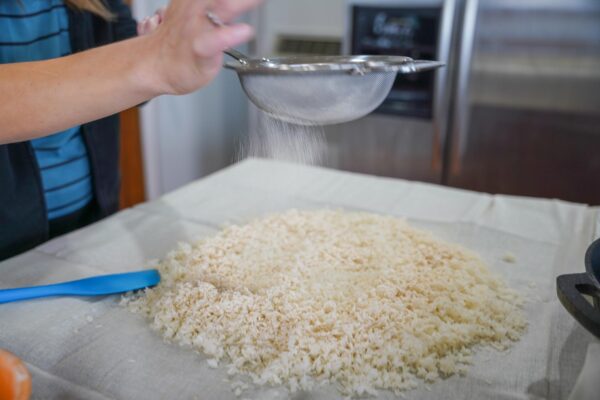
Improve your fermentation game with some great new products from Cultures for Health- a great spot for buying cultures, spores, and more!

